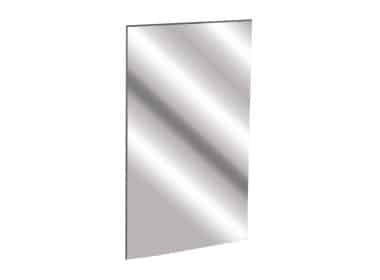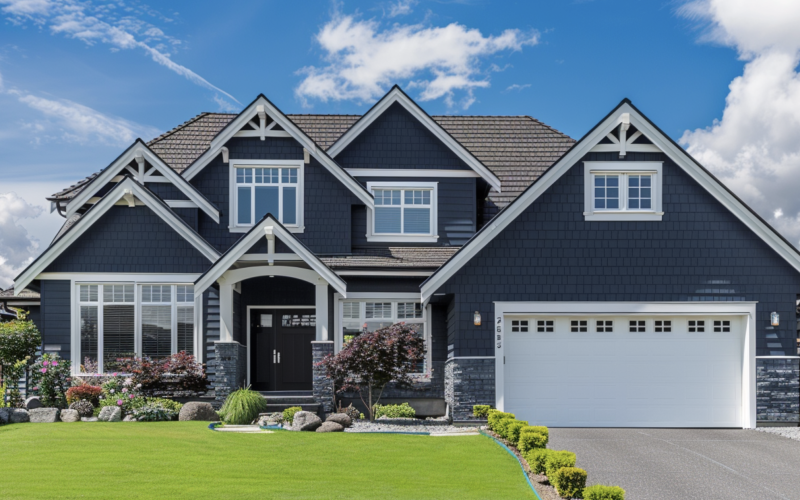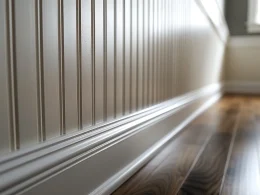White trim has long been a go-to choice for homeowners looking to add a clean, classic touch to their interiors.
Many of us agree it’s a timeless option, especially for those with a small white house with black trim.
But as design trends evolve, you might wonder if white trim is still the best choice for your home. I promise that white trim remains stylish and versatile, complementing various decor styles.
In this post, we’ll explore why white trim continues to be popular, how it can enhance your space, and some fresh ways to incorporate it into your home. We’ll also look at some alternatives for those seeking a change.
Let’s dive in and see how white trim can still make a big impact in today’s homes.
Yes, the white trim is still in style.
The Current Relevance of White Trim
White trim continues to be a top choice for many homeowners.
Its ability to work well with different house styles and colors keeps it in high demand. From cozy cottages to grand mansions, white trim fits right in.
This widespread appeal shows that white trim isn’t just a passing trend and a lasting home design favorite.
Timelessness and Versatility
One of the best things about white trim is how it stands the test of time. It’s a classic look that never seems to go out of style.
White trim can enhance its beauty whether a home was built last year or last century. This timeless quality means homeowners don’t have to worry about their exterior looking dated anytime soon.
Architectural Highlights
White trim highlights a home’s unique features. It outlines windows, doors, and other architectural elements, making them pop against the main exterior color.
Whether the house is painted in light pastels or deep, rich hues, this effect works.
The contrasting white trim helps showcase the craftsmanship and design details that make each home special.
Why Exterior White Trim is Still in Style
1. Contrast and Balance
White trim creates a striking visual effect when paired with darker siding colors. This contrast adds depth and interest to a home’s exterior, making it more eye-catching from the street.
For example, using white trim with deep, rich colors like Benjamin Moore’s Black Beauty or Sherwin Williams’ Iron Ore can result in a sophisticated look.
The stark difference between the dark body color and bright white trim draws attention to the home’s shape and structure.
It’s like putting a frame around a beautiful picture – the white trim outlines and defines the house, making it stand out in the neighborhood.
This high-contrast look can make windows appear larger and architectural details more prominent.
2. Compatibility with Various Styles
One of the great things about white trim is how well it fits different home styles.
White trim works with almost everything, from sleek modern designs to charming traditional homes.
It’s a chameleon-like feature that adapts to its surroundings.
For instance, white trim can highlight a craftsman-style home’s characteristic exposed rafters and deep eaves. It can also accentuate a colonial house’s symmetrical façade and multi-pane windows.
White trim can provide a crisp, finished look even on contemporary homes with clean lines and minimal ornamentation.
This versatility means homeowners don’t have to second-guess their choice of white trim when considering their home’s architectural style.
3. Brightening Effect
White trim has a special way of lighting up a home’s exterior. It can make a house look bigger, brighter, and more welcoming.
This brightening effect is especially helpful for homes that receive little natural light or have darker siding colors.
Popular white trim colors like Benjamin Moore’s Simply White or Sherwin Williams’ Alabaster create a crisp, clean look.
These shades reflect light well, making windows larger and entryways more open. Even on cloudy days, white trim helps a home maintain a fresh, well-maintained appearance.
The brightening effect of white trim isn’t just about looks – it can also impact how people feel about a home.
4. Flexibility with Color Palettes

One of the best things about white trim is how well it works with different color schemes. It’s like a neutral backdrop that allows homeowners to be creative with their main exterior color choices.
White trim can tie it all together whether you prefer bold, vibrant hues or soft, muted tones.
For example, pairing white trim with softer shades like Benjamin Moore’s Seapearl or Sherwin Williams’ Fog Mist can create an elegant, cohesive look.
These light, subtle colors work well with white trim to create a gentle, easy contrast on the eyes.
But white trim isn’t just for light color palettes. It also looks great with deeper, richer colors. White trim’s versatility means homeowners can change their exterior color without rethinking their trim choice.
5. Enhanced Curb Appeal
White trim gives homes a clean, well-kept look that boosts curb appeal.
Houses with white trim, like those using Benjamin Moore’s Snow White or Sherwin Williams’ Westhighland White, often catch the eye well.
This attractive appearance can increase a home’s value.
Good curb appeal matters even if you’re not selling. It’s nice to come home to a house that looks great from the street.
White trim helps create pride in your home’s look. It ties together all its exterior parts, making it appear more put-together and well-designed.
White trim’s impact on curb appeal goes beyond looks. It can make an older home seem well-maintained and cared for.
6. Increased Market Appeal
White trim is a smart choice for homeowners thinking about selling. It appeals to many potential buyers and can help in the real estate market.
As a neutral option, white trim doesn’t clash with personal tastes. It can attract buyers who prefer modern styles and traditional looks.
White trim also gives homes a clean, well-maintained appearance that many buyers find attractive.
This color choice allows buyers to imagine their style in the home easily.
They can picture different siding colors without the trim getting in the way. This flexibility can make a home appeal to more potential buyers.
Choosing white trim can be a good move for future resale. It’s a safe bet to help a home stand out positively in the market.
Conclusion
To wrap things up, white trim remains a smart choice for any home. Its timeless appeal, versatility, and ability to brighten spaces make it a favorite among homeowners and designers.
White trim works well, whether the goal is classic or modern. It’s easy to maintain, widely available, and budget-friendly too.
But what’s next for a home’s style? Perhaps it’s time to refresh existing white trim or add new moldings to enhance the space.
Or maybe experimenting with a contrasting trim color could create a bold new look.
Whatever the decision, white trim provides a fantastic foundation for a home’s overall aesthetic.











